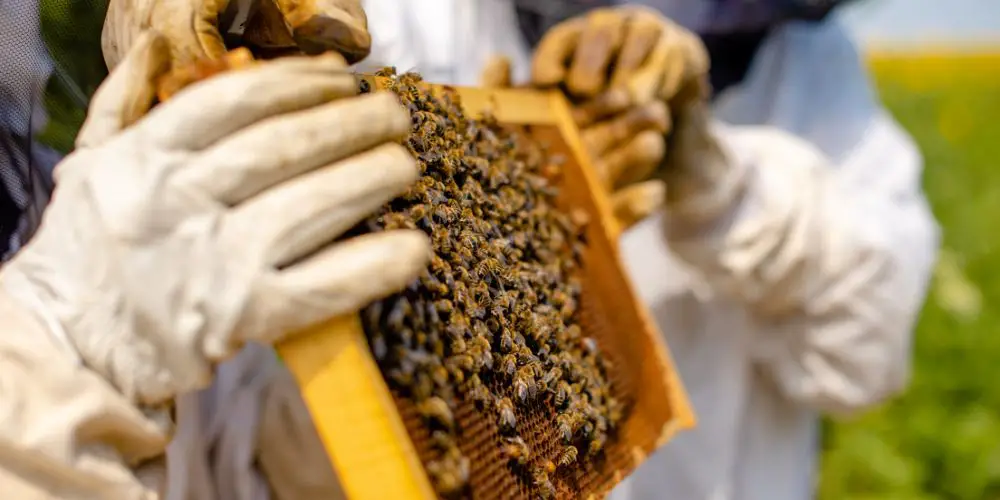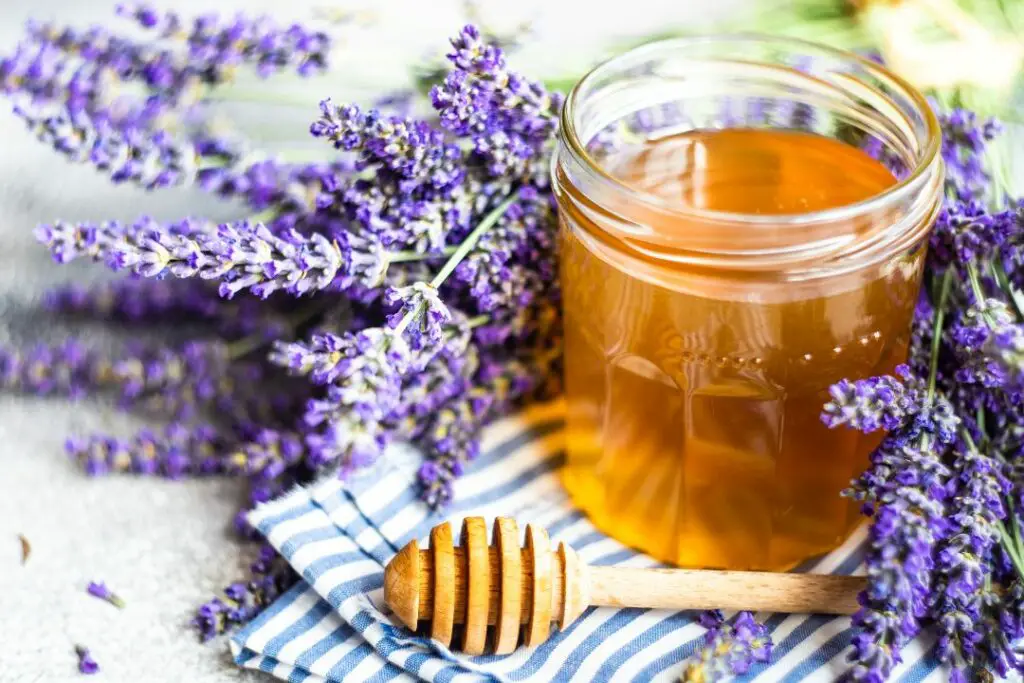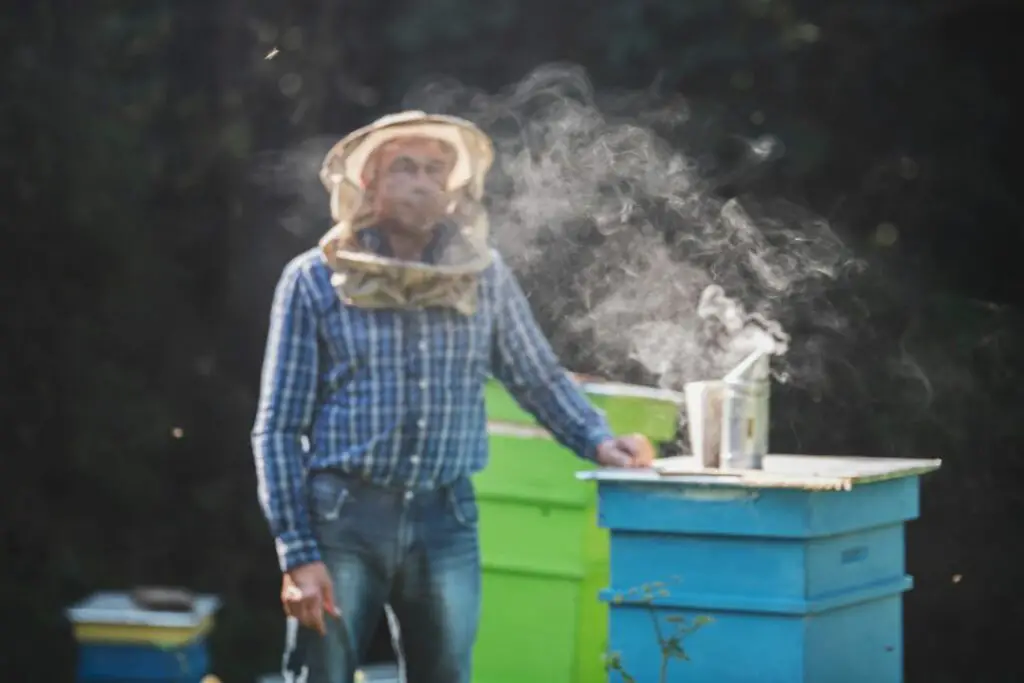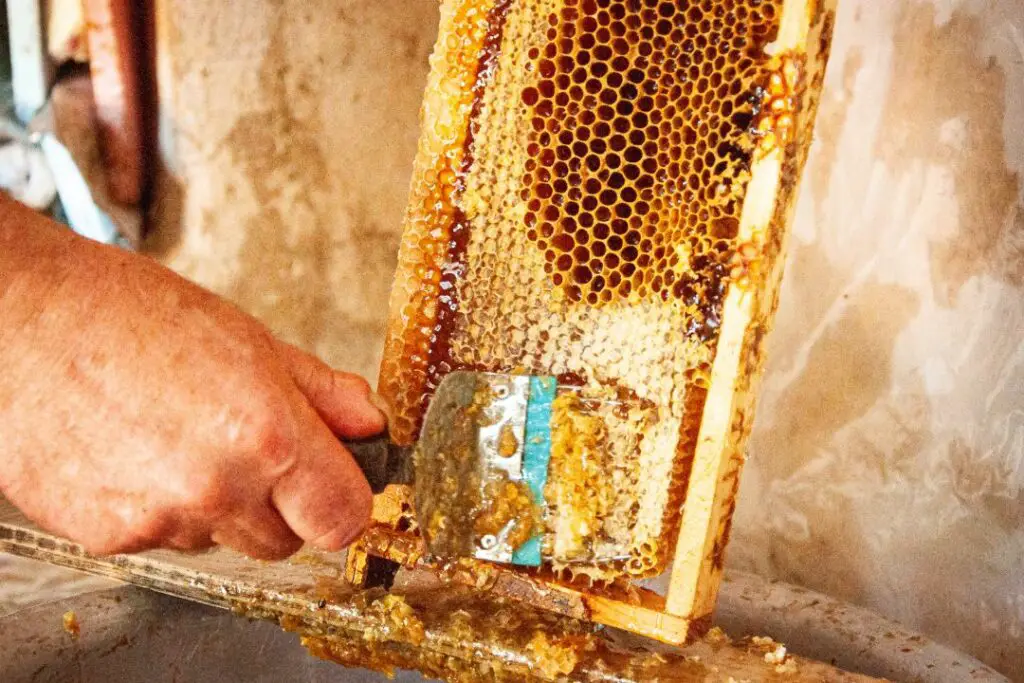Last updated on October 20th, 2023 at 11:46 am
If you’re interested in beekeeping, there’s no better time to start than now. Beekeeping can be a rewarding and fascinating hobby, and it’s essential for the environment too.
As bees play a vital role in pollinating crops and plants, beekeeping can help to ensure that our ecosystem remains healthy and balanced.
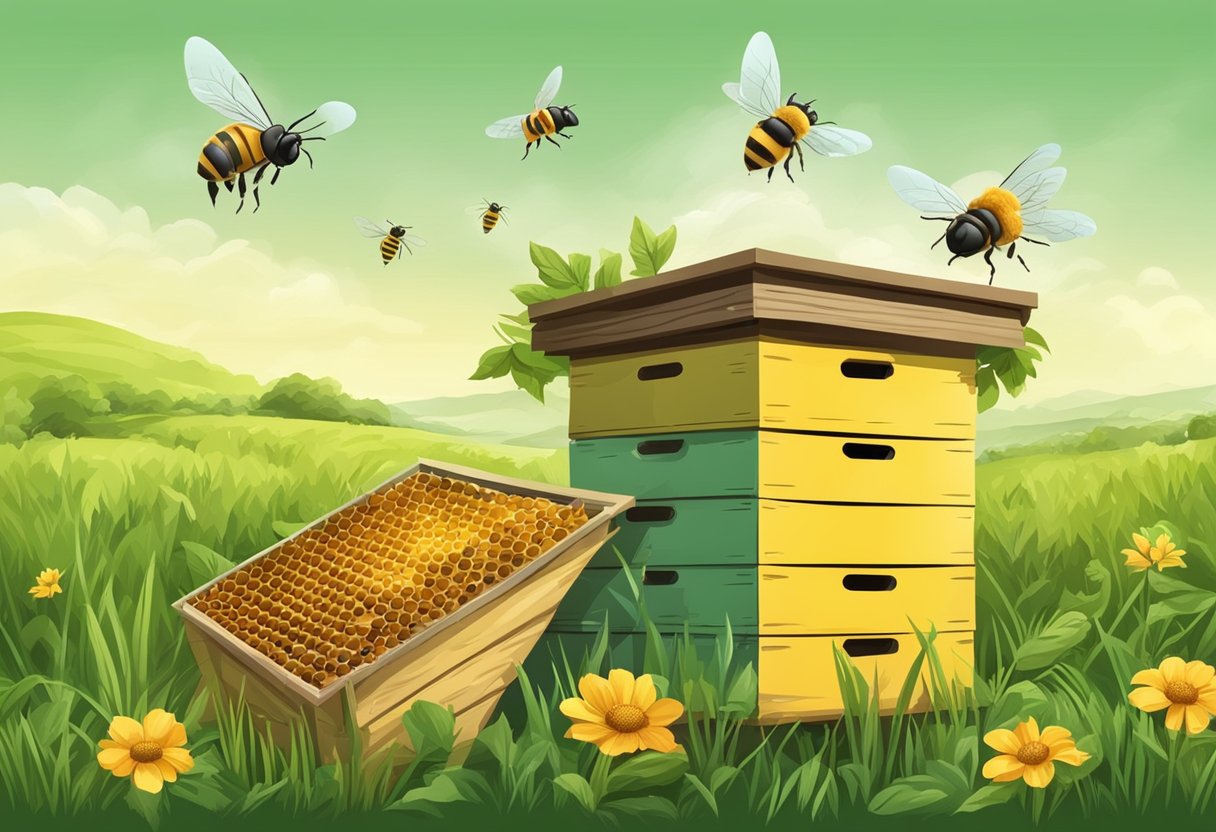
Starting beekeeping may seem daunting at first, but with the right knowledge and equipment, it can be a relatively straightforward process.
In this article, we’ll guide you through the basics of beekeeping, from understanding the importance of bees to harvesting your own honey.
Whether you’re a complete beginner or have some experience with beekeeping, we hope this article will be a helpful resource for you.
Key Takeaways
- Beekeeping is an important hobby that can help to support the environment.
- Starting beekeeping requires knowledge and equipment, but it can be a straightforward process.
- In this article, we’ll guide you through the basics of beekeeping, including understanding the importance of bees, harvesting honey, and becoming a part of the beekeeping community.
Understanding Beekeeping
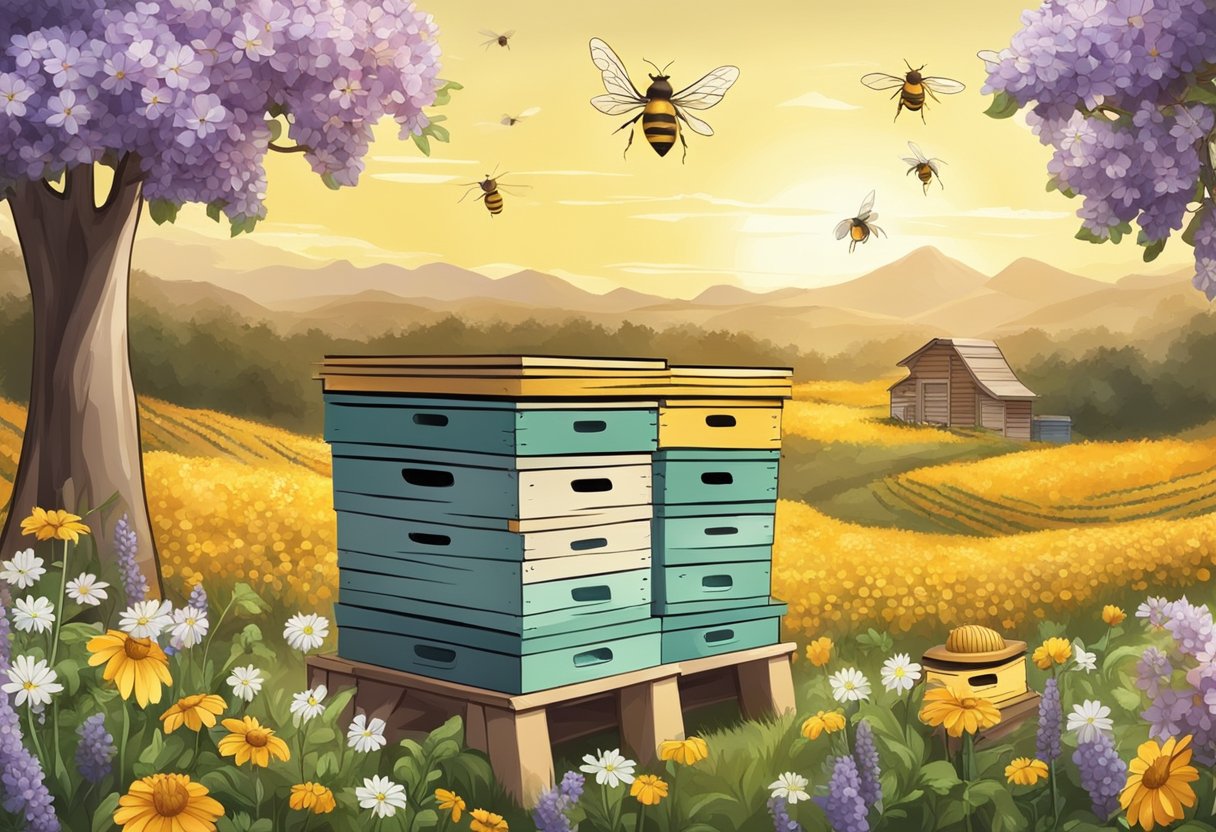
What is Beekeeping
Beekeeping is the practice of keeping honey bees in hives for the purpose of collecting honey and other bee products.
Beekeeping has been around for thousands of years, and it is an important part of our environment and nature.
Honey bees are responsible for pollinating many of the plants that we rely on for food, and they play a vital role in the ecosystem.
Why Keep Bees
There are many reasons why people choose to keep bees.
One reason is to collect honey, which is a delicious and natural sweetener that can be used in cooking and baking. Honey is also known for its many health benefits, such as its antibacterial and antioxidant properties.
Another reason to keep bees is to help the environment. Honey bees are important pollinators, and by keeping them, we can help ensure that our plants and crops are properly pollinated.
This can lead to better yields and healthier plants.
Finally, beekeeping can be a rewarding hobby. It allows us to connect with nature and learn about the fascinating world of honey bees. It can also be a great way to meet new people and join a community of beekeepers.
When considering starting beekeeping, it is important to understand the commitment and responsibilities involved.
Bees require regular care and maintenance, and it is important to ensure that you have the necessary equipment and knowledge to properly care for them.
It is also important to consider the impact that beekeeping may have on your neighbours and the environment.
Overall, beekeeping can be a wonderful and fulfilling hobby, but it is important to approach it with respect and responsibility.
Getting Started
Starting beekeeping can be a rewarding and enjoyable experience. However, it is important to take the time to properly prepare before diving in. In this section, we will cover the key steps to getting started with beekeeping.
Choosing a Suitable Location
Choosing a suitable location for your beehive is essential for the success of your colony. You want to select a site that is sheltered from the wind and receives plenty of sunlight.
Your hive should also be located away from areas with high foot traffic or where children and pets play. It is recommended to place the hive on a flat surface, with good drainage, and facing southeast or south.
Beekeeping Equipment
Before you start beekeeping, you will need to invest in some essential equipment. These include a beehive, hive tool, smoker, gloves, feeder, queen excluder, honey super, and beekeeping suit.
You can purchase these items separately or as part of a beekeeping kit. It is important to choose high-quality equipment to ensure the safety and health of your bees.
Understanding the Beehive
The beehive is the home of your colony, and it is crucial to understand its components. The Langstroth hive is the most common type of beehive used in beekeeping.
It consists of a brood box, queen excluder, and honey super. The brood box is where the queen bee lays her eggs, and the worker bees store honey and pollen.
The queen excluder keeps the queen bee from entering the honey super, where bees store excess honey. The honey super is where you will harvest honey from.
In addition to the Langstroth hive, there are other types of hives, such as the top-bar hive. It is important to research and choose the type of hive that best suits your needs and preferences.
In conclusion, getting started with beekeeping requires careful planning and preparation. Choosing a suitable location, investing in high-quality equipment, and understanding the beehive are all essential steps to ensure the success of your colony.
Learning About Bees
As we begin our beekeeping journey, it’s important to understand the role of bees in our ecosystem. Bees are pollinators, which means they play a crucial role in the reproduction of many plants.
In fact, it’s estimated that one in every three bites of food we eat is made possible by pollinators like bees.
The Role of Bees
Bees collect nectar and pollen from flowers, using their long tongues to extract the nectar and their hairy bodies to pick up the pollen. They then bring the nectar and pollen back to the hive, where they use it to make honey and feed their young.
While collecting nectar, bees transfer pollen from the male parts of one flower to the female parts of another, allowing for fertilization and seed production. This process is essential for the growth and reproduction of many plants, including fruits, vegetables, and nuts.
The Bee Lifecycle
Understanding the lifecycle of bees is also important for beekeeping. Bees go through several stages of development, beginning as an egg laid by the queen bee.
The egg hatches into a larva, which is fed by worker bees with a mixture of pollen and nectar called “bee bread.” The larva then spins a cocoon and transforms into a pupa, eventually emerging as an adult bee.
The queen bee is responsible for laying all the eggs in the hive, and can lay up to 2,000 eggs per day during peak season.
Worker bees are responsible for building and maintaining the hive, collecting food, and caring for the young. Honey bees are known for their ability to produce honey, which they make by regurgitating and evaporating nectar.
In summary, bees play a vital role in our ecosystem as pollinators, and understanding their lifecycle is important for successful beekeeping.
By providing a safe and healthy environment for bees to thrive, we can help ensure the continued success of our food systems.
Beekeeping Through the Seasons
Beekeeping is a year-round activity, and each season presents its own unique challenges and tasks. As beekeepers, we must be aware of the changing needs of our bees and adjust our management practices accordingly.
In this section, we will explore the different tasks and considerations for each season.
Spring
Spring is a time of renewal and growth for our bees. As the weather warms up, the bees become more active and begin to forage for nectar and pollen.
You need to ensure that the hive has enough food stores to support the growing colony. Regular inspections are also important to check for signs of disease and to ensure that the queen is laying eggs.
Summer
Summer is the peak season for beekeeping. The bees are busy collecting nectar and pollen, and the hive is rapidly expanding.
Swarming can be a concern during this time, so it is important to monitor the hive closely and take steps to prevent swarming if necessary. Regular inspections and honey harvesting are also important tasks during the summer months.
Autumn
Autumn is a time of preparation for winter. The bees begin to reduce their activity and focus on storing food for the colder months ahead.
It is important to ensure that the hive has enough honey stores to last through the winter. Regular inspections are also important to check for signs of disease and to treat for varroa mites if necessary.
Winter
Winter is a time of rest for our bees. The hive becomes dormant, and the bees cluster together to conserve heat. It is vital to ensure that the hive has enough honey stores to last through the winter.
Insulation and ventilation are also important considerations to ensure that the hive stays warm and dry.
Overall, beekeeping requires careful management and attention to detail throughout the year. By understanding the needs of our bees and adjusting our practices accordingly, we can help ensure the health and productivity of our hives.
Challenges in Beekeeping
Starting beekeeping can be a rewarding experience, but it also comes with its fair share of challenges. In this section, we will discuss some of the common challenges that beekeepers face and how to deal with them.
Dealing with Disease
Disease is a major concern for beekeepers. Some of the most common diseases that affect bees include American Foulbrood, European Foulbrood, and Nosema. These diseases can cause serious damage to your hive and even lead to the death of your bees.
To prevent the spread of disease, it is important to inspect your hive regularly. Look for signs of disease, such as dead bees, discoloured brood, or foul-smelling combs.
If you suspect that your hive is infected, you should contact a local beekeeping association or a professional beekeeper for advice.
Managing Swarms
Swarms are a natural part of the beekeeping process, but they can also be a challenge to manage. Swarms occur when a colony becomes too large and the bees decide to split off and form a new colony.
To prevent swarms, it is important to manage your hive properly. Make sure that your hive has enough space for the bees to grow and expand. Regularly inspect your hive to ensure that the queen is healthy and that there are no signs of overcrowding.
If you do experience a swarm, it is important to act quickly. Contact a local beekeeping association or a professional beekeeper for help. They can help you safely remove the swarm and relocate it to a new hive.
Remember, managing disease and swarms is an important part of beekeeping. By staying vigilant and taking proactive steps to prevent these challenges, we can ensure the health and longevity of our hives.
Harvesting and Using Honey
Once your bees have produced honey, it’s time to harvest it. The timing of the harvest will depend on the honey flow in your area and the strength of your colony.
You should only harvest honey when there is enough excess honey in the hive, so that the bees still have enough to eat during the winter months.
To harvest honey, you will need to remove the frames from the hive that are filled with honey. You can use a bee brush to gently remove any bees from the frames. Once you have removed the frames, you can use a honey extractor to remove the honey from the comb. Alternatively, you can cut the comb from the frame and crush it to extract the honey.
It is important to store your harvested honey properly. Bees store honey in their hive at a temperature of around 35°C, so it is important to store your honey at a similar temperature to prevent it from crystallising.
You can store your honey in jars or other airtight containers, and keep it in a cool, dark place.
Honey can be used in a variety of ways, from sweetening your tea or coffee to baking and cooking. It is also a natural remedy for coughs and sore throats.
*Essential tip – Honey should not be given to infants under one year old, as it can contain spores that can cause botulism.
In addition to its culinary uses, honey has a number of health benefits. It contains antioxidants and has antibacterial properties, making it a popular ingredient in skincare products. Some people also use honey to treat wounds and burns, as it can help to promote healing.
Overall, harvesting honey is a rewarding experience for beekeepers, and can provide a delicious and healthy addition to your diet. Just remember to always leave enough honey stores for your bees to survive the winter.
Becoming a Part of the Beekeeping Community
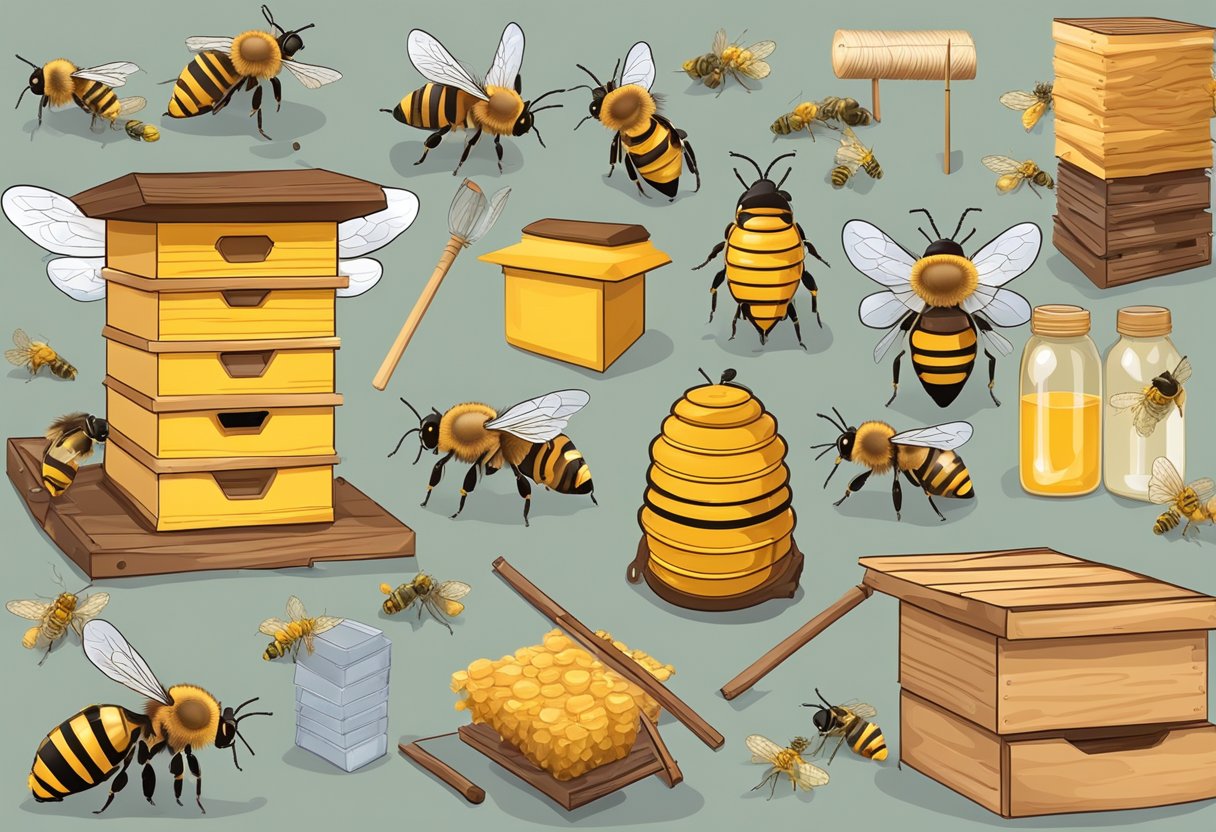
Starting a beekeeping journey can be an exciting and rewarding experience. As we begin our journey, it is important to become a part of the beekeeping community to learn from experienced beekeepers, join a local beekeeping association, and consider beekeeping as a business.
Joining a Local Beekeeping Association
Joining a local beekeeping association is a great way to connect with other beekeepers in the community. These associations offer opportunities to attend meetings, workshops, and events to learn more about beekeeping.
Additionally, they provide access to mentors who can offer guidance and support as we begin our beekeeping journey. The British Beekeepers Association (BBKA) is a great resource for finding local beekeeping associations in the UK.
Learning from Experienced Beekeepers
Learning from experienced beekeepers is essential to becoming a successful beekeeper. Finding a mentor who can offer guidance and support can be invaluable.
Many local beekeeping associations offer mentorship programs, or we can reach out to experienced beekeepers in the community to ask for guidance.
Additionally, attending beekeeping classes or courses can provide a solid foundation in beekeeping knowledge.
Beekeeping as a Business
Beekeeping can be a profitable business, but it requires careful planning and budgeting. Before starting a beekeeping business, it is important to consider the initial costs, ongoing expenses, and potential revenue.
Offering honey and other bee products for sale can be a great way to earn income from beekeeping. The BBKA and local beekeeping associations can provide resources and support for those interested in pursuing beekeeping as a business.
In conclusion, becoming a part of the beekeeping community is essential to starting a successful beekeeping journey.
Joining a local beekeeping association, learning from experienced beekeepers, and considering beekeeping as a business are all important steps to take as we begin our beekeeping journey.

